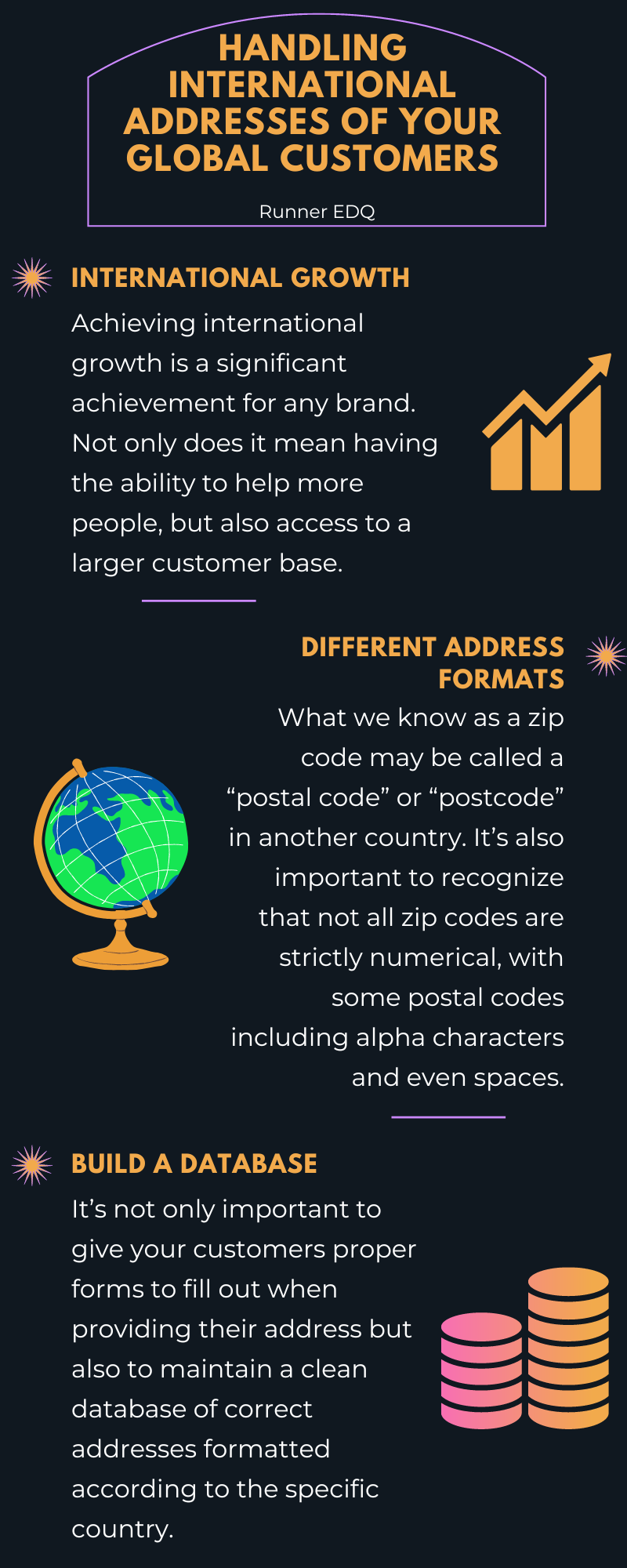Achieving international growth is a significant achievement for any brand. It means your reputation goes beyond local existence and is now supported by a global market. Not only does it mean having the ability to help more people, but also access to a larger customer base which translates to increased revenue potential.
However, the accomplishment also means increased complexity in operations, particularly as you tackle logistics, new shipping patterns, and local law compliance. One of the elements that may not immediately come to your attention is the vast differences in address formats that are unique for different countries. Therefore, to conquer international markets and please more customers around the world, you need an understanding of international postal data and deliverable postal standards. Here’s how to handle the international addresses of your global customers:
Understand the different address formats
In the US, the standard way to write an address starts with the recipient’s first and last name. This is followed by “address line 1,” which is the street number and street name. Next is “address line 2,” which is the apartment, unit, or its number. Finally, we have the city, state, and zip code.
A country that differs significantly in the way its addresses are formatted is Japan. In Japan, the address begins with the postal code, followed by the prefecture, city, and subarea(s). The recipient’s name is written at the end. If the address is written in English, the format changes with the recipient’s name placed at the beginning, followed by the city and subarea(s), and ending with the prefecture and the postal code. And in France, the address format starts similar to a US address, but instead of the postal code at the end, it comes before the name of the city or whichever applicable locality.
Some international addresses differ in wording and ordering compared to local addresses. For example, states can be referred to as “provinces” or “regions” in our countries. What we know as a zip code may be called a “postal code” or “postcode” in another country. It’s also important to recognize that not all zip codes are strictly numerical, with some postal codes including alpha characters and even spaces.
Build a database for individual countries
Proper international address formats are critical to receiving shipments delivered on time. The package may go undelivered without a correct foreign address format, disappointing your customers and ruining your reputation. Therefore, it’s not only important to give your customers proper forms to fill out when providing their address but also to maintain a clean database of correct addresses formatted according to the specific country.
At RunnerEDQ, we support international postal data for 240 countries and territories worldwide. This CLEAN_Address integration will automatically convert international postal data into the deliverable postal standard for the address in the country you are validating. We take the guessing game out of how your international addresses should appear by formatting and validating the addresses in both real-time and in batch processing.
To learn how we can help you and your business, complete the contact form.

